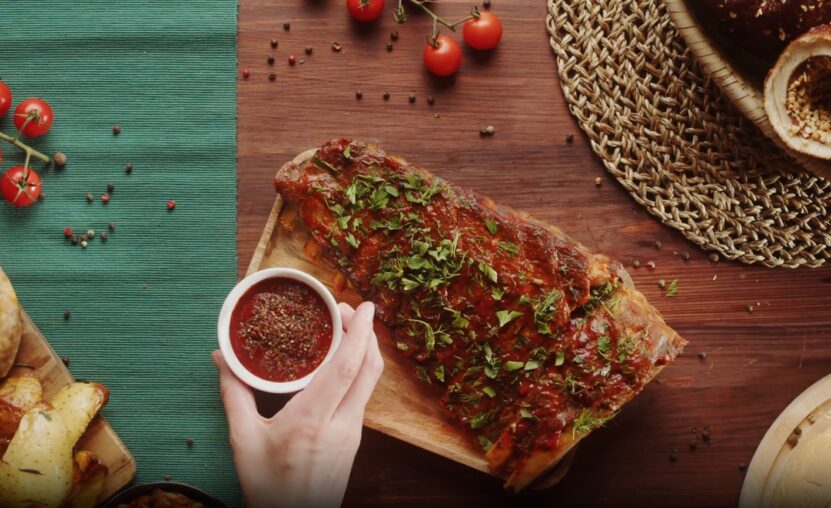Grilling ribs is an art form, a culmination of selecting the right meat, marinating it to perfection, and employing impeccable grilling techniques. The charcoal grill adds an extra layer of smokiness, enhancing the rich, succulent flavor of the ribs. Let’s embark on this savory journey to grill ribs to perfection using a charcoal grill.
Choosing the Right Ribs
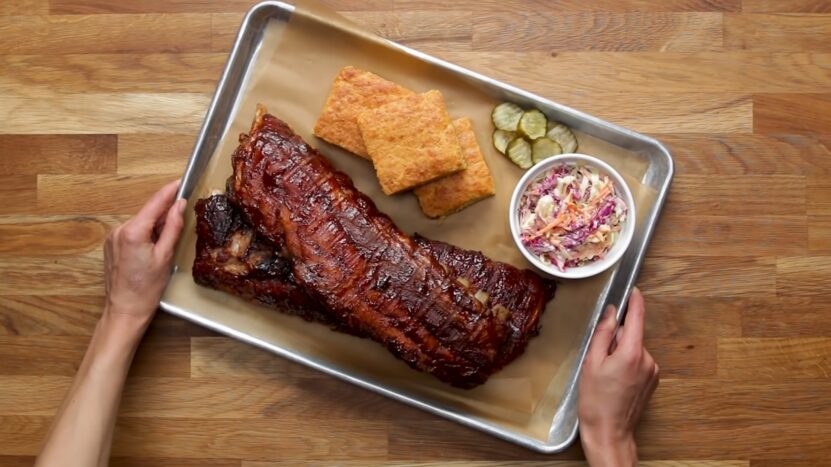
Before delving into the cooking process, selecting the right cut is paramount. Ribs come in various cuts, each with a unique flavor profile and texture.
Baby Back Variation
Baby back ribs are the top choice for many, and rightly so. They are tender, lean, and cook relatively quickly.
- Taste and Texture: Baby back ribs are known for their delicious, succulent taste and are less fatty, making them a favorite for those who prefer a leaner option.
- Selection Tips: When selecting, look for ribs with even, well-distributed meat and avoid those with a lot of fat or sinew showing.
Spare Variation
These offer a heartier and more flavorful experience compared to baby back ribs.
- Taste and Texture: A spare variation has more meat between the bones and a higher fat content, contributing to their rich flavor.
- Selection Tips: Choose ribs with a thick, even layer of meat and minimal surface fat.
Preparation
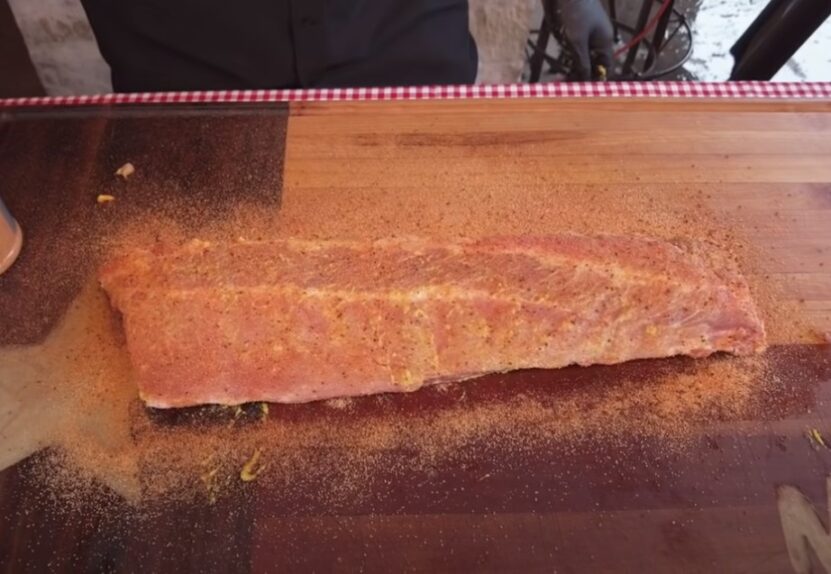
Once you’ve selected the ideal ribs, it’s time to prepare them for the grill. Proper preparation ensures the meat absorbs the marinade and cooks evenly.
Marinating
Marinating is crucial for imbuing meat with flavor and tenderness.
Marinade Components:
- Acidic Ingredient: Vinegar or citrus juice to tenderize the meat.
- Oil: Helps in flavor absorption.
- Seasonings: Salt, pepper, herbs, and spices to enhance the flavor.
- Marinating Time: A minimum of 2 hours is recommended, but for deeper flavor, marinating overnight is ideal.
Rubs and Seasonings
Rubbing the ribs with a mixture of spices enhances their flavor profile.
- Choosing Spices: Consider a blend of paprika, brown sugar, salt, pepper, garlic powder, onion powder, and cayenne pepper for a balanced flavor.
- Applying the Rub: Ensure the rub is evenly distributed over the ribs, pressing it onto the meat to adhere well.
Setting Up the Charcoal Grill
A well-set charcoal grill is the foundation of successful rib grilling. It’s pivotal to manage the heat effectively to avoid overcooking or undercooking the ribs.
Arranging Charcoal
For ribs, it’s crucial to use indirect heat. Arrange the charcoal on one side of the grill, creating a hot zone and a cool zone.
- Charcoal Amount: Use enough charcoal to maintain a consistent temperature of around 250°F for several hours.
- Adding Wood Chips: For extra smokiness, soak some wood chips in water and place them over the charcoal.
Managing Temperature
Maintaining a steady temperature is vital for cooking the ribs to perfection.
- Using Vents: Adjust the grill vents to control the airflow and, subsequently, the temperature.
- Monitoring Temperature: A grill thermometer is indispensable to keep track of the internal grill temperature.
Grilling
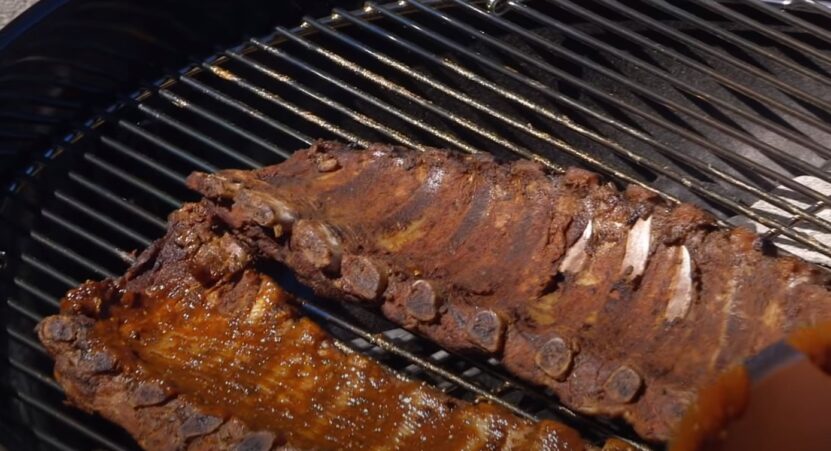
Grilling is where the magic happens. It’s where the preparation and hard work pay off, culminating in a mouthwatering dish.
Method
Proper grilling technique is vital for achieving ribs that are tender on the inside and crispy on the outside.
- Placement: Place the ribs bone side down on the cool zone of the grill.
- Grilling Time: Baby back variation generally requires around 4-5 hours, while spare variation may need 5-6 hours.
Glazing and Serving
The final step is to glaze the ribs with your favorite sauce and serve them.
- Glazing: During the last 30 minutes of grilling, brush the ribs with barbecue sauce every 10 minutes, allowing it to caramelize beautifully.
- Serving Suggestions: Serve the ribs with classic sides like coleslaw, baked beans, or cornbread for a complete meal.
Essential Tips for Grilling
Grilling ribs to perfection involves nuance and attention to detail. Here are some additional insights to elevate your grilling game, ensuring they are flavorful, juicy, and tender.
Keeping the Meat Moist
Retaining moisture is key to achieving succulent ribs.
- Using a Water Pan: Place a pan of water in the grill, next to the charcoal, to maintain humidity during cooking.
- Spritzing: Regularly spritz the ribs with a mixture of water, vinegar, or apple juice to prevent them from drying out.
Checking Doneness
Determining when the ribs are done is crucial to avoid over or undercooking.
- Bend Test: Pick them up with tongs; if they bend and the meat starts to crack, they are done.
- Internal Temperature: The internal temperature should reach around 190°F to 203°F, ensuring the collagen has broken down, making the meat tender.
Common Mistakes to Avoid
Even seasoned grill masters can make mistakes when grilling ribs. Awareness of these common pitfalls can help you avoid them and achieve grilling success.
Overcooking or Undercooking
Maintaining the right temperature is crucial to avoid overcooking or undercooking the ribs.
- Monitoring Temperature: Regularly check the grill and meat temperatures to ensure the ribs are cooking as intended.
- Not Rushing the Cook: Ribs need time to become tender and flavorful, so avoid the temptation to increase the heat to speed up the cooking process.
Neglecting Grill Maintenance
A clean and well-maintained grill is paramount for achieving optimal grilling results.
- Cleaning the Grill Grates: Clean the grates before each use to prevent the ribs from sticking.
- Maintaining Airflow: Ensure the air vents are unobstructed to maintain proper airflow and temperature control.
The Final Touch: Pairings and Serving Suggestions
After laboring at the grill, it’s time to savor the fruits of your labor. How and what you serve your ribs with can make a significant difference in the dining experience.
Drink Pairings
The right drink can complement and enhance the flavor of the ribs.
- Beer: A cold beer is a classic choice; opt for a lager or ale that balances the smokiness.
- Wine: A bold red wine, like Zinfandel or Shiraz, can hold up to the rich, savory flavors of the ribs.
Side Dishes
Well-chosen side dishes can complement the ribs, creating a balanced and satisfying meal.
- Vegetables: Grilled vegetables or a fresh salad can add a refreshing contrast to the rich ribs.
- Starches: Classic options like macaroni and cheese, baked beans, or cornbread make for hearty companions to your grilled ribs.
Creating the Perfect Ambiance
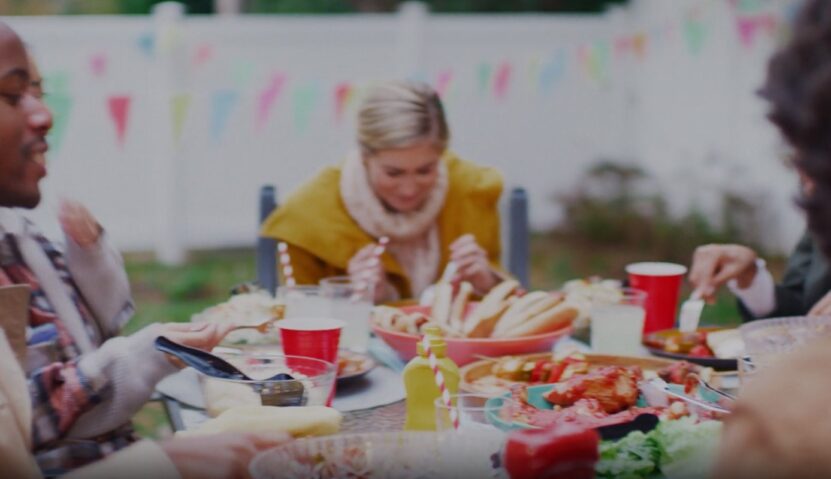
While the flavor is king when it comes to barbecued ribs, the environment in which you enjoy them adds a special touch to the experience. Here’s how to set the perfect mood for your barbecue feast.
Lighting and Setting
The right lighting can create a warm and inviting atmosphere, enhancing the overall dining experience.
- Outdoor Lighting: Use soft, ambient lighting like lanterns or string lights to create a cozy and relaxed environment.
- Table Setting: Opt for casual, comfortable, and functional table settings, including sturdy plates and plenty of napkins.
Music and Entertainment
The right tunes and some fun activities can elevate your barbecue to the next level.
- Music Selection: Choose a playlist that’s upbeat and universally appealing, perhaps a mix of classic rock and country.
- Games and Activities: Consider having some lawn games like cornhole or horseshoes available for guests to enjoy before or after the meal.
Addressing Dietary Preferences and Restrictions
In today’s diverse culinary landscape, it’s important to consider the varied dietary needs and preferences of your guests. Here’s how to accommodate everyone.
Providing Alternatives
Offering alternative options ensures that everyone can join in the feast.
- Vegetarian Options: Consider grilling some portobello mushrooms or vegetable skewers for those who don’t eat meat.
- Gluten-Free Choices: Provide gluten-free side dishes and sauces for guests with gluten sensitivities.
Clear Labeling
Clear communication is key when serving guests with dietary restrictions.
- Labeling Dishes: Clearly label all dishes with potential allergens to avoid any mix-ups.
- Asking Guests: Inquire about dietary restrictions beforehand, and make a note of them when planning the menu.
FAQs
Can I use a gas grill instead of a charcoal grill for cooking ribs?
Absolutely! While this article focuses on charcoal grills due to their ability to impart a smoky flavor to the ribs, gas grills can also be used effectively.
The key is to maintain a consistent, low temperature and possibly use a smoker box with wood chips to replicate the smoky flavor characteristic of charcoal grills.
Can I use foil when grilling ribs?
Yes, using foil can be beneficial. Wrapping them in foil, also known as the Texas Crutch, can help accelerate cooking and retain moisture. It can be especially useful during the last couple of hours of cooking to prevent the ribs from drying out.
How often should I turn the ribs while grilling?
When using indirect heat, there is usually no need to turn them. However, if you are using a method that requires direct heat, you might need to turn them every 30 minutes to ensure even cooking. Always use tongs to turn them to avoid piercing the meat and losing juices.
Should I remove the membrane from the ribs before grilling?
It is highly recommended to remove the membrane located on the bone side before marinating and cooking. This membrane can be tough and chewy after cooking.
To remove it, use a knife to loosen a corner of the membrane, then pull it off using a paper towel for a better grip.
What is the ideal charcoal arrangement for even cooking?
For even cooking, arrange the charcoal briquettes in a half-moon or snake pattern around the perimeter of the grill. This creates a steady, indirect heat source, allowing the ribs to cook evenly without burning.
Make sure to replenish the charcoal periodically to maintain the temperature.
How can I add more flavor to my ribs if I want something different from traditional BBQ?
If you’re looking to experiment with flavors, consider using different types of wood chips for varied smokiness, such as applewood or mesquite.
Additionally, you can explore diverse marinades, rubs, and glazes incorporating ingredients like honey, mustard, teriyaki, or even fruit juices to create a unique flavor profile for your ribs.
Final Words
Grilling ribs using a charcoal grill is a rewarding culinary endeavor, culminating in a delicious, smoky, and savory dish. By following these comprehensive steps, from choosing and preparing the ribs to grilling them to perfection, you can ensure a delightful and flavorful experience. So, ignite those charcoals and let the grilling begin!
